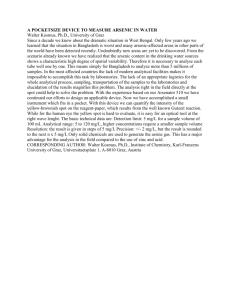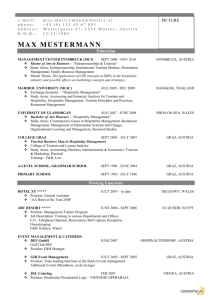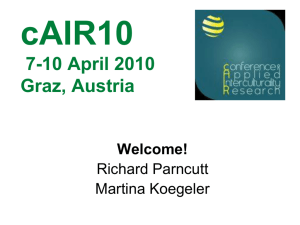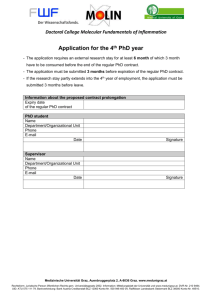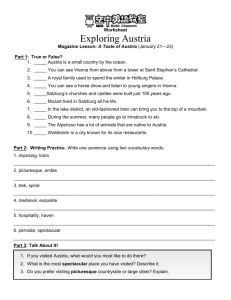Bradycardia at high altitude
advertisement
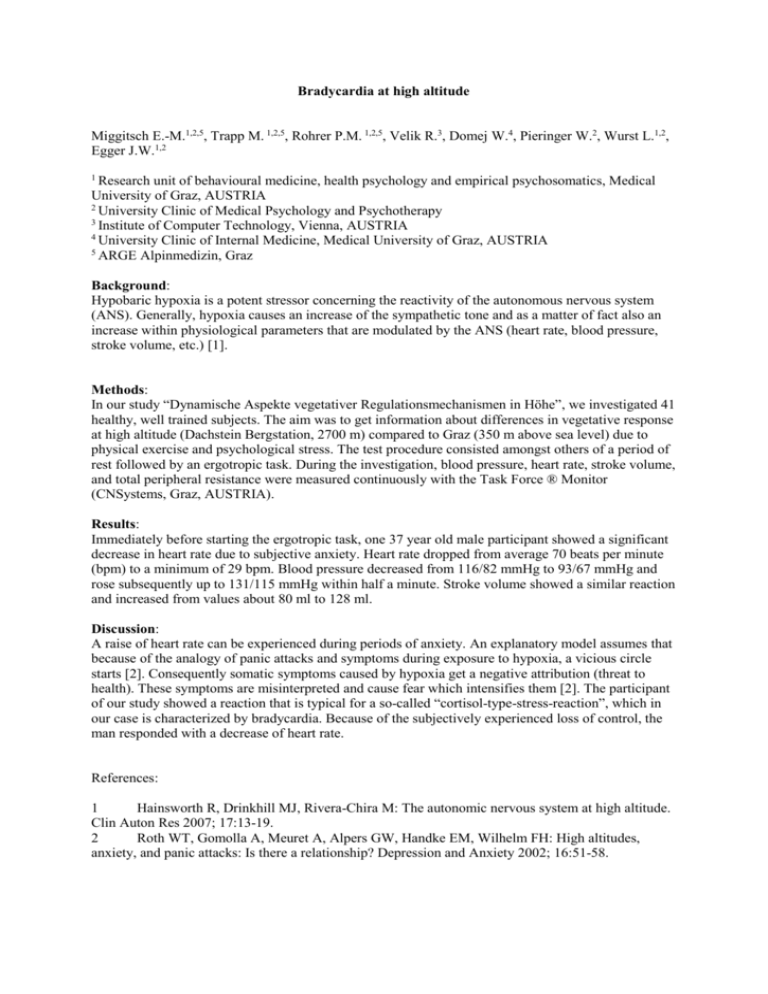
Bradycardia at high altitude Miggitsch E.-M.1,2,5, Trapp M. 1,2,5, Rohrer P.M. 1,2,5, Velik R.3, Domej W.4, Pieringer W.2, Wurst L.1,2, Egger J.W.1,2 1 Research unit of behavioural medicine, health psychology and empirical psychosomatics, Medical University of Graz, AUSTRIA 2 University Clinic of Medical Psychology and Psychotherapy 3 Institute of Computer Technology, Vienna, AUSTRIA 4 University Clinic of Internal Medicine, Medical University of Graz, AUSTRIA 5 ARGE Alpinmedizin, Graz Background: Hypobaric hypoxia is a potent stressor concerning the reactivity of the autonomous nervous system (ANS). Generally, hypoxia causes an increase of the sympathetic tone and as a matter of fact also an increase within physiological parameters that are modulated by the ANS (heart rate, blood pressure, stroke volume, etc.) [1]. Methods: In our study “Dynamische Aspekte vegetativer Regulationsmechanismen in Höhe”, we investigated 41 healthy, well trained subjects. The aim was to get information about differences in vegetative response at high altitude (Dachstein Bergstation, 2700 m) compared to Graz (350 m above sea level) due to physical exercise and psychological stress. The test procedure consisted amongst others of a period of rest followed by an ergotropic task. During the investigation, blood pressure, heart rate, stroke volume, and total peripheral resistance were measured continuously with the Task Force ® Monitor (CNSystems, Graz, AUSTRIA). Results: Immediately before starting the ergotropic task, one 37 year old male participant showed a significant decrease in heart rate due to subjective anxiety. Heart rate dropped from average 70 beats per minute (bpm) to a minimum of 29 bpm. Blood pressure decreased from 116/82 mmHg to 93/67 mmHg and rose subsequently up to 131/115 mmHg within half a minute. Stroke volume showed a similar reaction and increased from values about 80 ml to 128 ml. Discussion: A raise of heart rate can be experienced during periods of anxiety. An explanatory model assumes that because of the analogy of panic attacks and symptoms during exposure to hypoxia, a vicious circle starts [2]. Consequently somatic symptoms caused by hypoxia get a negative attribution (threat to health). These symptoms are misinterpreted and cause fear which intensifies them [2]. The participant of our study showed a reaction that is typical for a so-called “cortisol-type-stress-reaction”, which in our case is characterized by bradycardia. Because of the subjectively experienced loss of control, the man responded with a decrease of heart rate. References: 1 Hainsworth R, Drinkhill MJ, Rivera-Chira M: The autonomic nervous system at high altitude. Clin Auton Res 2007; 17:13-19. 2 Roth WT, Gomolla A, Meuret A, Alpers GW, Handke EM, Wilhelm FH: High altitudes, anxiety, and panic attacks: Is there a relationship? Depression and Anxiety 2002; 16:51-58.


